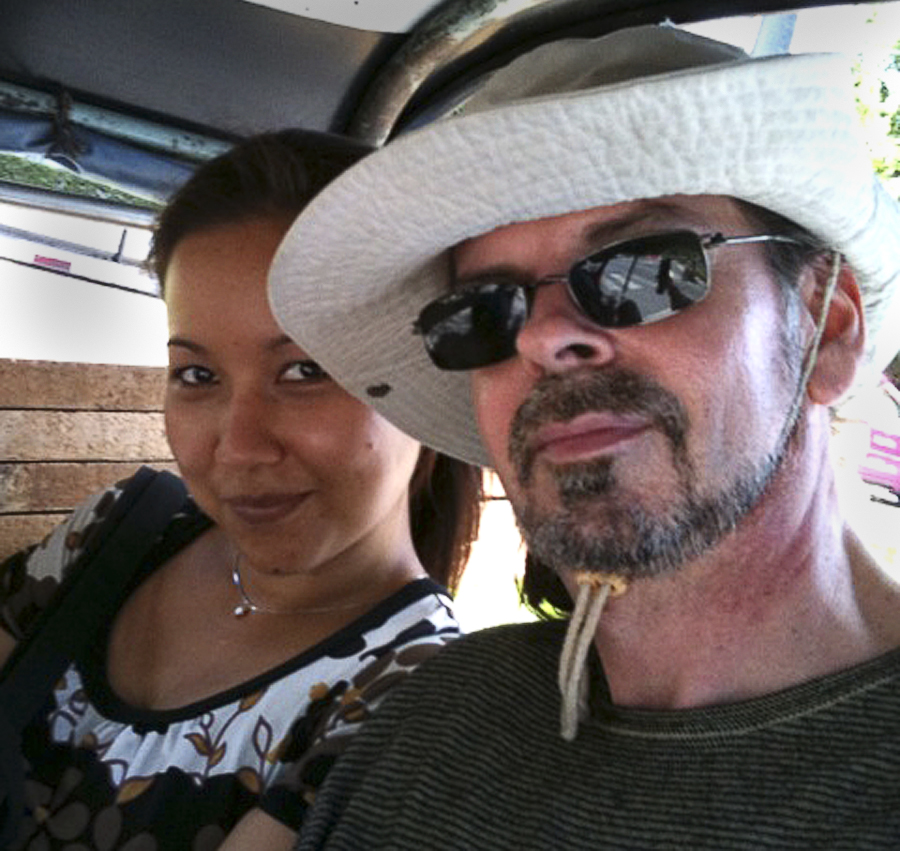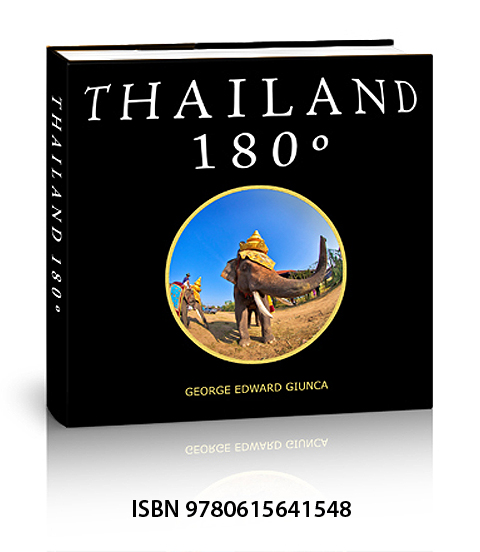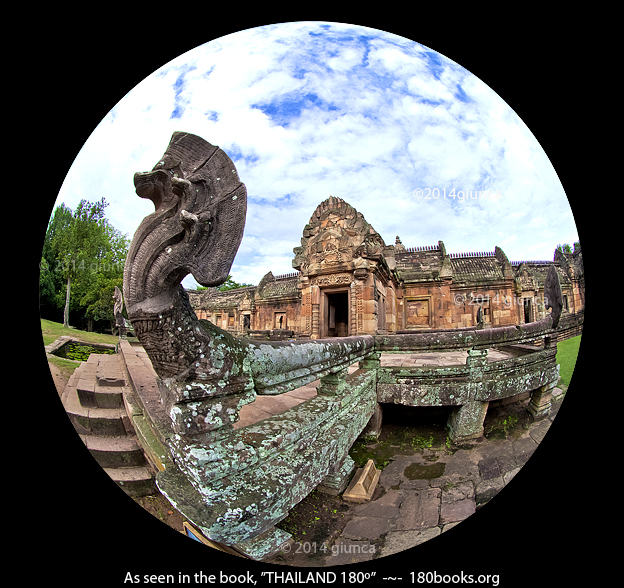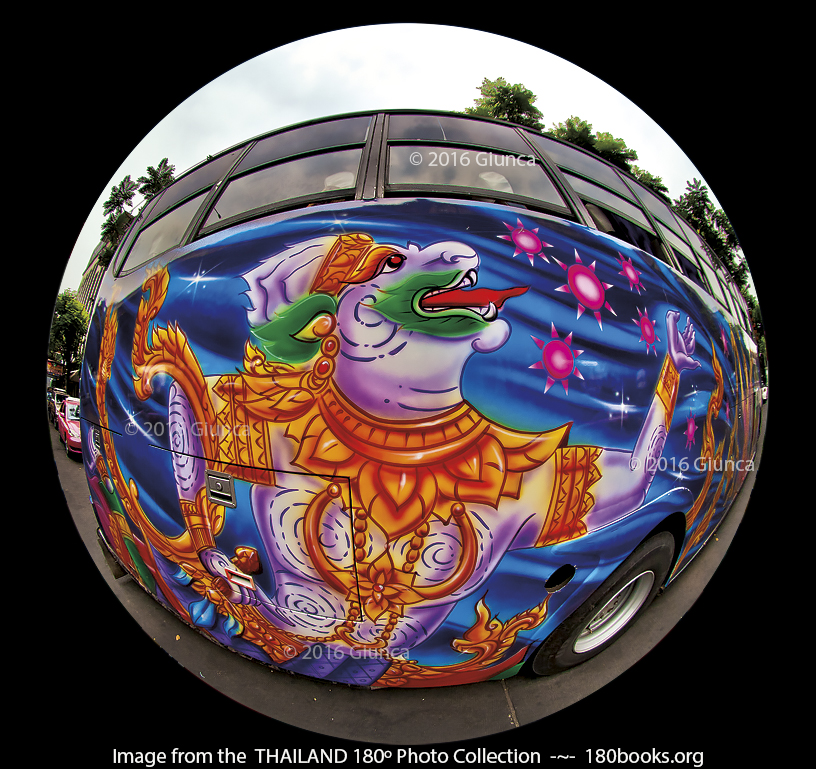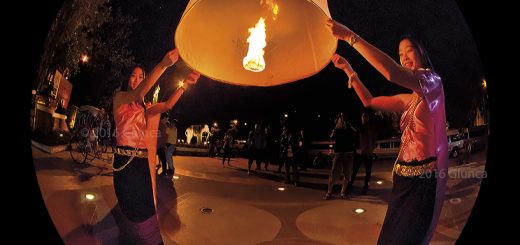Dalle2 & 180books Part 3
I realized some time ago, that I have always been somewhat of a frustrated painter, and I thought of reimagining my favorite 180books photographs as paintings done by Masters using different styles of different art movements.
It’s probably best if you start by reading the first blog in this series about my work with the AI system DALLE-2. This week I decided to challenge DALLE-2 with some Eastern art styles. I have to say that overall I’m impressed with the AI output and in some cases, even when I can’t get the image that I want, the image created is worthy in its own right.
Other than a newfound appreciation for AI technology, my own eyes and brain are seeing and feeling art in a way that I hadn’t imagined. Then too, my study of art history and artists has been very rewarding. That said, off come the gloves as I prepare for the usual frustrations and victories.
Talay Noi Wetlands, Phattalung, Thailand
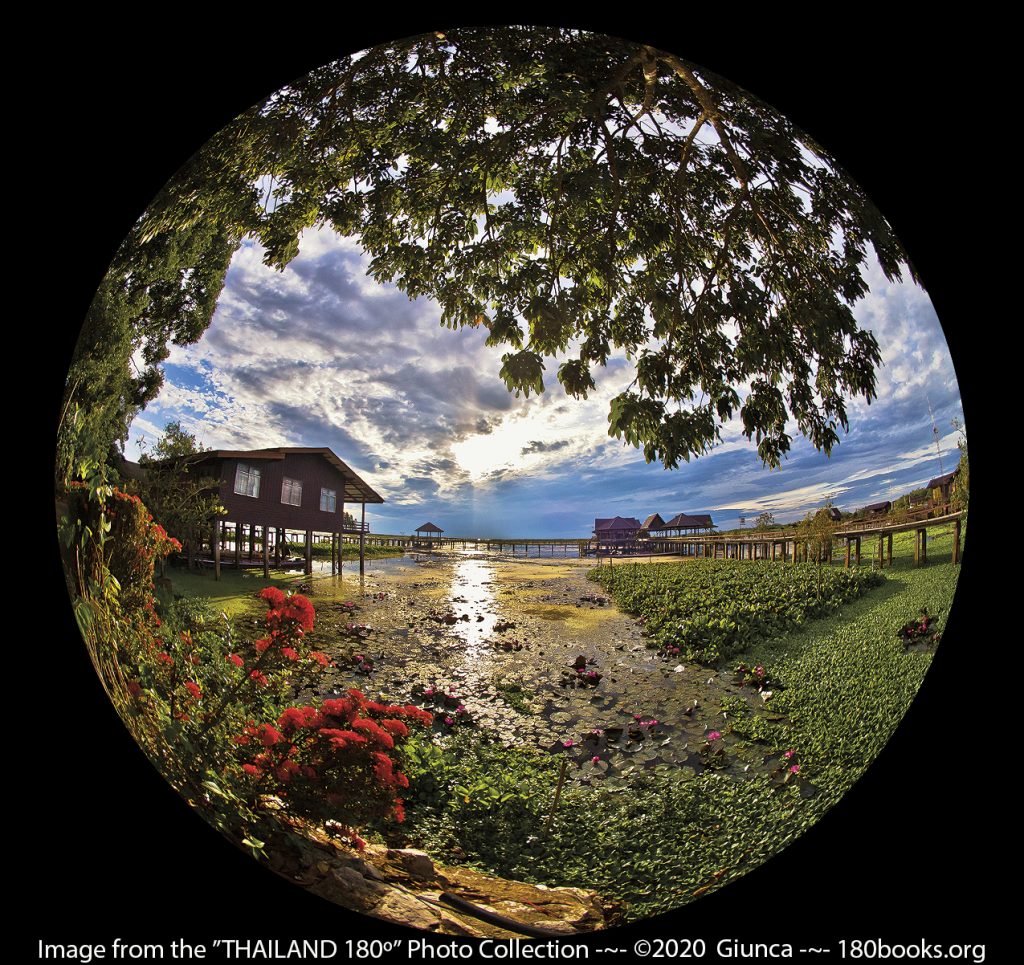
The Talay Noi Wetlands Preserve, in Phattalung, Thailand at 450 square kilometers, is the largest waterfowl reserve in the Kingdom, and home to 187 species of birds. We decided to book a boat ride at sunrise to explore the area and hopefully get a sunrise photo. Unfortunately, the sun wasn’t doing its job that day, or rather, clouds blocked the horizon. We had given up and were making reservations for the next morning’s tour when the sun burst through the clouds and I captured the image above.
DALLE-2: WoodBlock / Mental Block
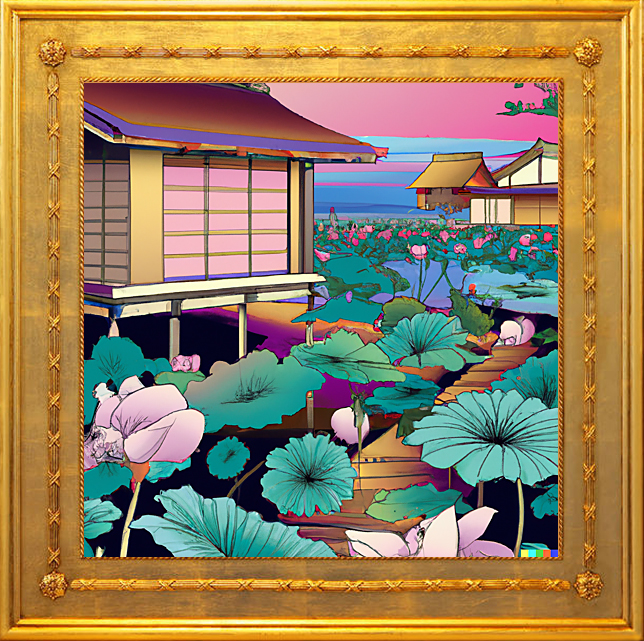
Even as we were boating about the wetlands, I was reminded of some Japanese woodblock prints that I had seen in the galleries and museums in Los Angeles. I thought it would be easy to make a similar image using DALLE-2, but I was wrong. At first, the colors were garish, then the style was all wrong. I had given up when a Japanese artist friend came to the rescue.
She sent me copies of Ukiyoe’s work, snippets of descriptions, AND color swatches of his palette. I used Photoshop to convert the swatches into hexadecimal numbers and added these to my description. Even after experimenting with the snippets, colors, and style descriptions, I still don’t have the image I want. I swear that resting a subject on DALLE for a few days is helpful. I’ll be back.
Traditional Japanese woodblock print of many lily pads and many magenta lotus blossoms, and an old wooden hut on stilts, at sunrise
Some common characteristics of Japanese woodblock painting are bold and simple compositions, flat planes of color, and a limited palette. Japanese woodblock painters often make use of a technique called yūzen, in which intricate patterns are painted onto silk fabrics before they are applied to the woodblock. This allows for a greater range of colors and a more detailed overall design
OpenAI API
Kyaiktiyo Pagoda (Golden Rock), Myanmar
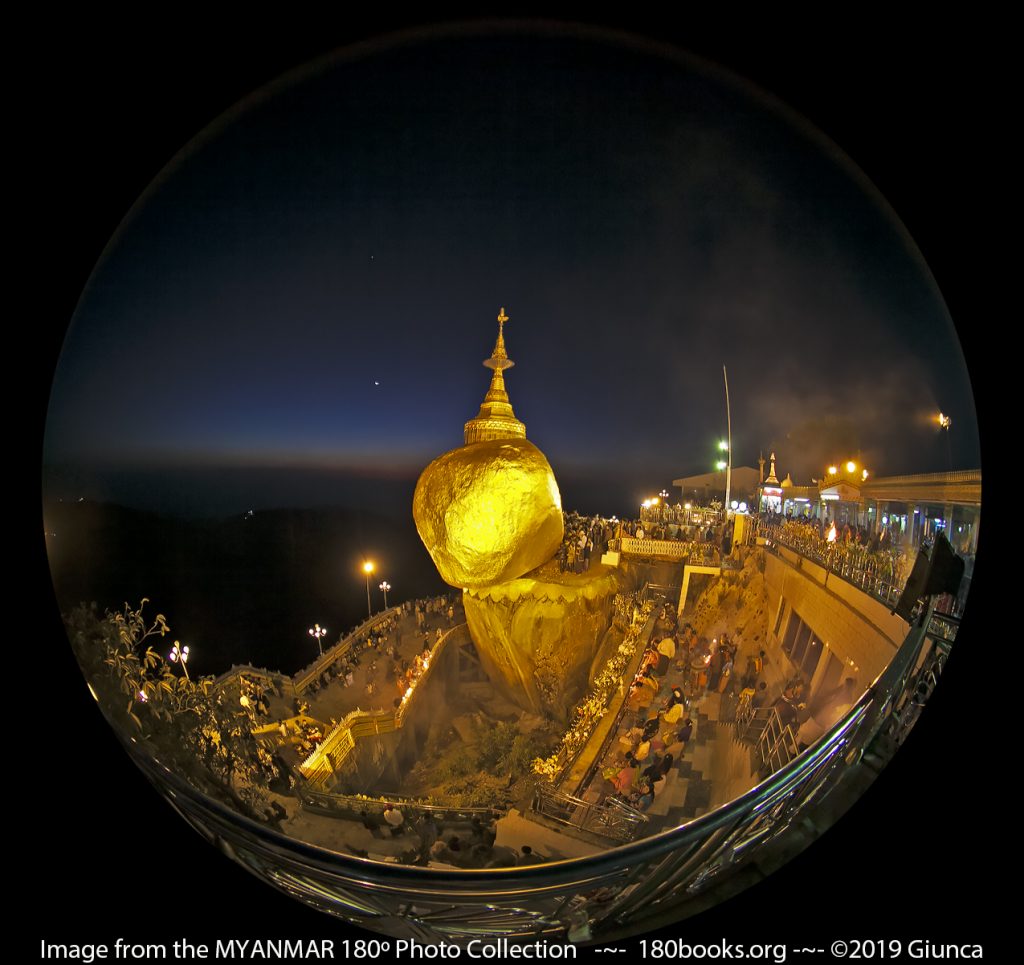
The Kyaiktiyo Pagoda in Myanmar is truly an amazing sight! The pagoda is about 7.3 meters tall and is built on top of a granite boulder, that is painted with gold leaf. This boulder is perched on the edge of a cliff and appears to be ready to fall at any time. Legend has it that the rock sits on a strand of Buddha’s hair, and was placed there by the god Indra.
It’s a long hike up the mountain, but I couldn’t bring myself to be carried up the mountain on a “Sedan Chair” carried by 4 men. We arrived just in time to see the sun setting. Luckily, by the time I found a good vantage point, there was still a glow on the horizon. The ringing of bells, chanting, and clouds of incense made for a great atmosphere. We took our time and I even added a gold leaf to the rock. I was gentle though! Part of me was afraid that I would be remembered as the man who pushed the rock off the mountain while making merit.
DALLE-2 + Magrette +180books + Van Gogh
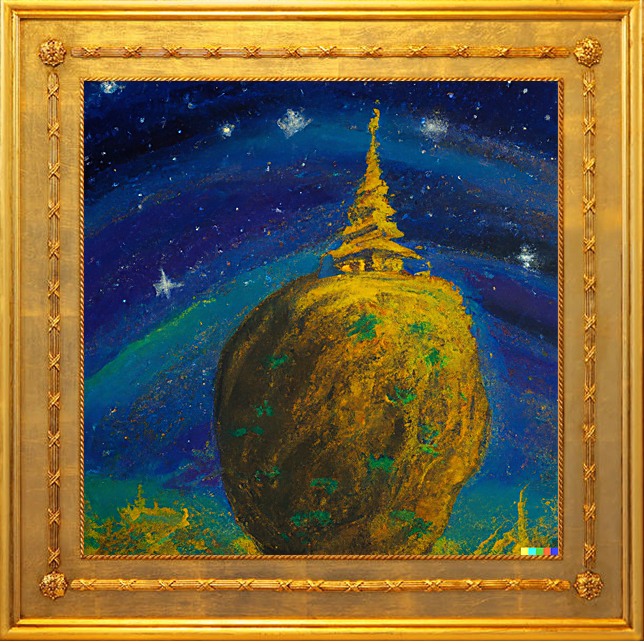
The Repetition and Random qualities of DALLE frustrate me to no end. Sometimes the system seems to mock me by repeating the wrong parts of an image and then it suddenly changes to such a new random image that I’m at a loss on how to proceed. Such was the case with Rene Magritte’s masterpiece The Castle of the Pyrenees. The image of this painting, also called Floating Rock has been in my mind since the day I saw it many years ago. Something about that image that I can’t explain, stirs strange emotions in me that I can’t explain. I was definitely thinking of a floating golden rock, that night in Kyaiktiyo and I was determined to get it.
For some reason, DALLE wouldn’t give me a rock floating in the air, even after several trials. I steered the system towards a gold rock with a pagoda but could make the rock float, and it started generating strand random images. I went back to my favorite of the images and added “A starry night” to the description.
I suppose I could use outpainting to further refine the image, but for now, it stays. It seems that Harry Torczyner, who commissioned Magritte to paint The Castle of the Pyrenees had similar problems getting exactly what he described.
How to Annoy a Genius
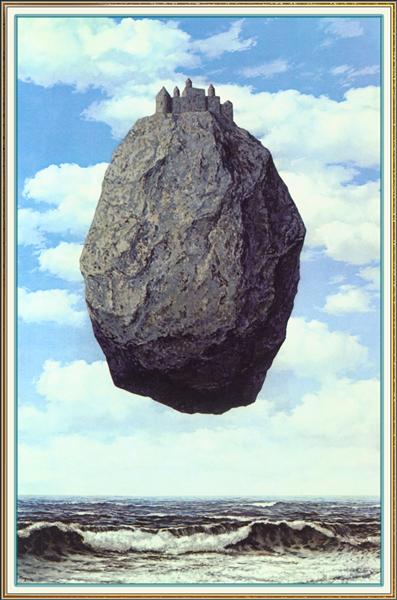
Harry Torczyner, an international lawyer, poet, and author was a long-time friend of René Magritte. When he commissioned Magritte to create The Castle of the Pyrenees, he had plenty of ideas about how the painting should look and even provided descriptions. As Magritte worked on the painting, he decided to exclude many of his friend’s additions to “retain the avigora as he had envisioned.”
Mommy, That building doesn’t Look like an Elephant!
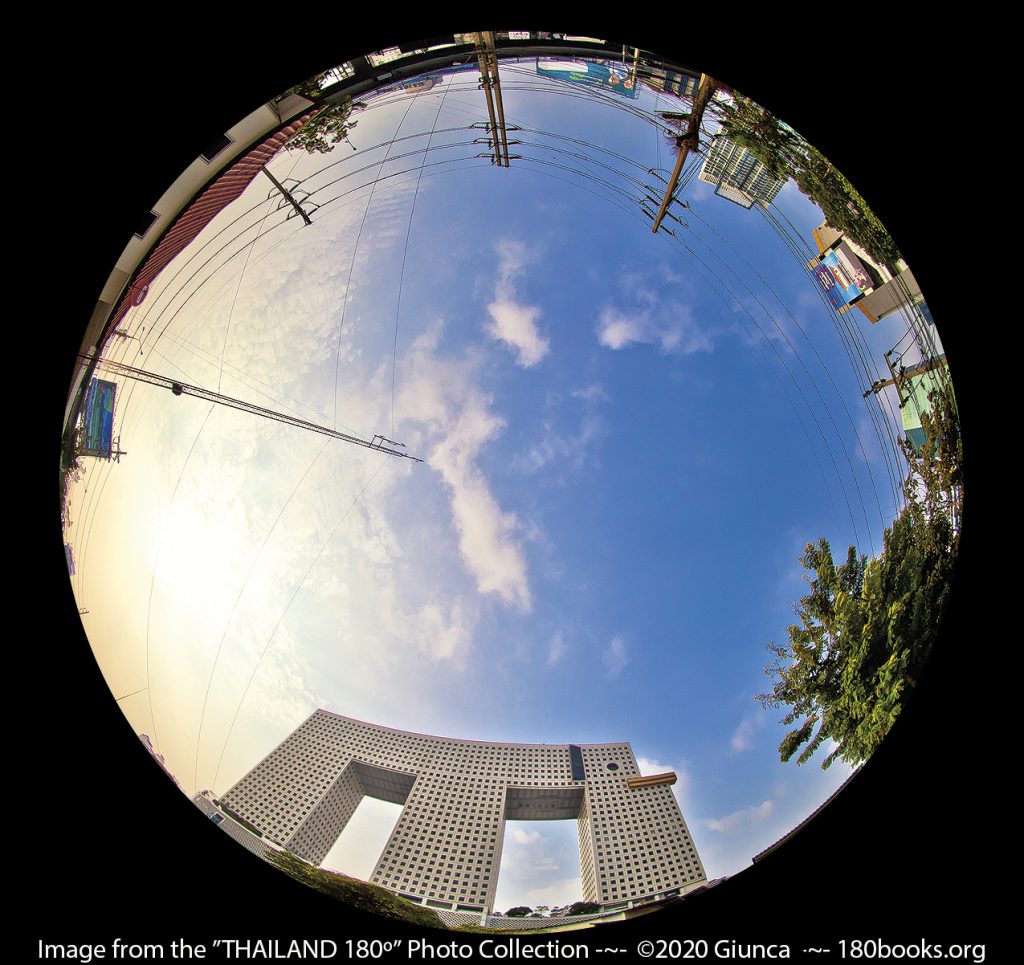
The Elephant Building is a 32-floor skyscraper in Bangkok, Thailand that resembles an elephant. Two of the three towers are for offices, and the third tower is for residential space. There are also deluxe suites on the top floor. I could never seem to find a good angle for a fisheye photo, until one day when we just happened to be driving around in a taxi on another mission. A tower and wires provide a perfect counterbalance to the composition, fencing off the other objects.
Now THAT’S an Elephant Building!
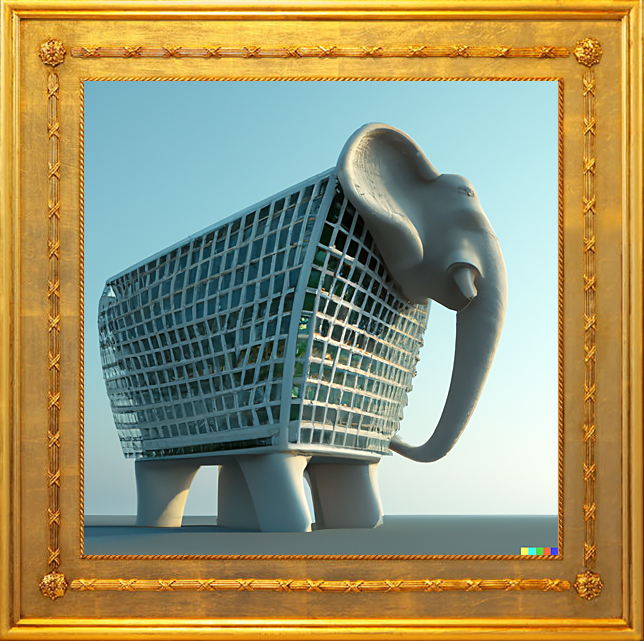
I struggled with getting the elephant building I wanted while continuing to change to different styles and descriptions. Finally, “3d rendering of a neomodern office building shaped like an elephant” got me close and the generate variations button did the rest. I look forward to using out-painting to add a few details.
Snake Charmer
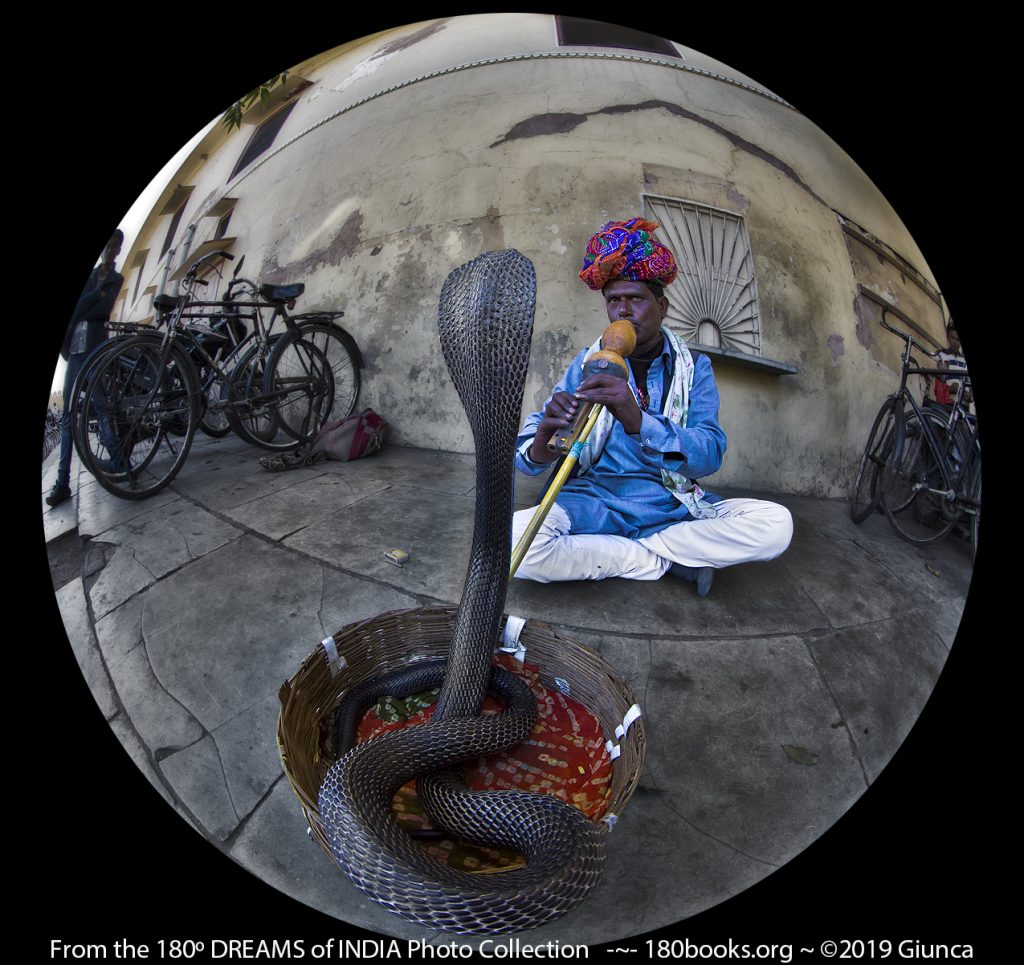
We had waited months to make this photo, but Snake Charmers are hard to find these days. I had prepared remote controls for my camera, but when we finally found this man, I was too excited to return to the car for the tripod and remotes and just got down next to the snake and started clicking. Like all of my photos for this project, I’m using an 8mm circular fisheye lens and need to get very, very close. There’s a video of me taking this photo. Someone used a flash and the snake almost attacked me. Video Here
DALLE-2, Can You Rajput?
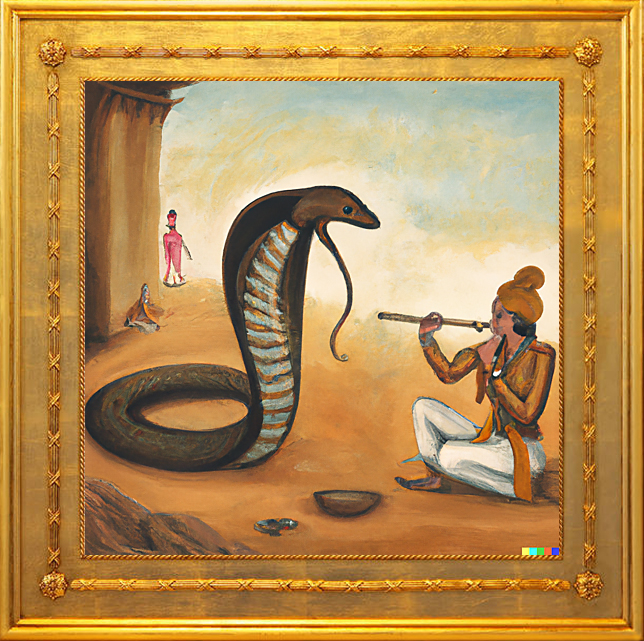
Since the original scene was in Rajasthan, I wanted to see a Rajasthani also called Rajput styled painting. Rajput paintings evolved in the late 16th and early 17th century, in the royal courts. I started with the prompt, “Rajput-style Painting of a snake charmer playing a punji flute to a cobra in front of him. Cobra is between the viewer and the snake charmer, exaggerated perspective.” I was happy with the result. The colors and the composition are pleasing. I especially love the figure in pink, walking into the painting.
While there exist a plethora of themes in Rajput paintings, a common motif found throughout Rajput works is the purposeful manipulation of space. In particular, the inclusion of fuller spaces is meant to emphasize the lack of boundaries and inseparability of characters and landscapes. In this way, the individuality of physical characters is almost rejected, allowing both the depicted backgrounds and human figures to be equally expressive.
Wiki
The Golden Mermaid on Laem Samila
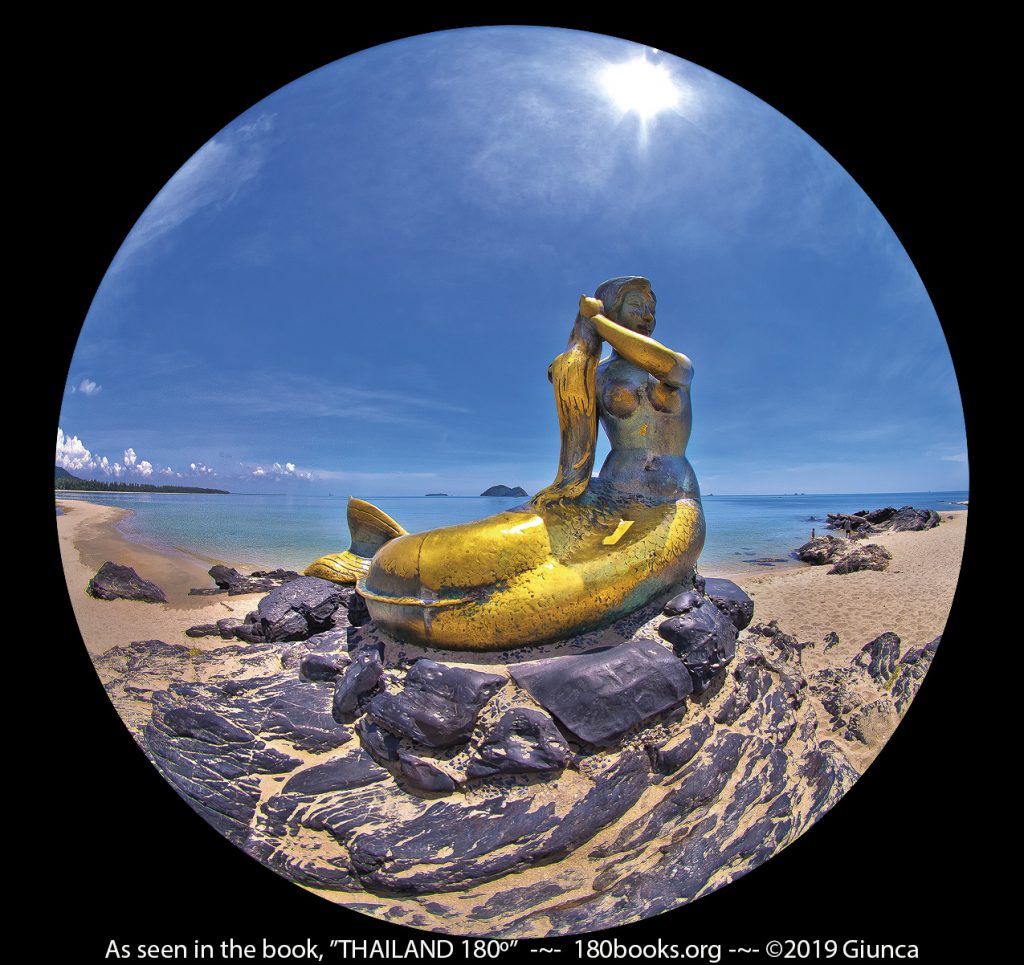
Since its creation in 1966, by Jitr Buabus, the mermaid sculpture has become the symbol of Laem Samila beach in Songkhla. Local legend has it that one night a mermaid came to this beautiful beach. A young fisherman saw the mermaid combing her long hair and frightened her. She swam away leaving the comb behind. The fisherman kept the comb and is still waiting for her to return. Capturing the image was simple as it was a perfect day with some texture in the clouds and great visibility. The biggest hurdle to overcome was waiting for a herd of selfie-takers to leave the scene and go back to playing with their phone.
Relax Ma’am, I’m a Professional
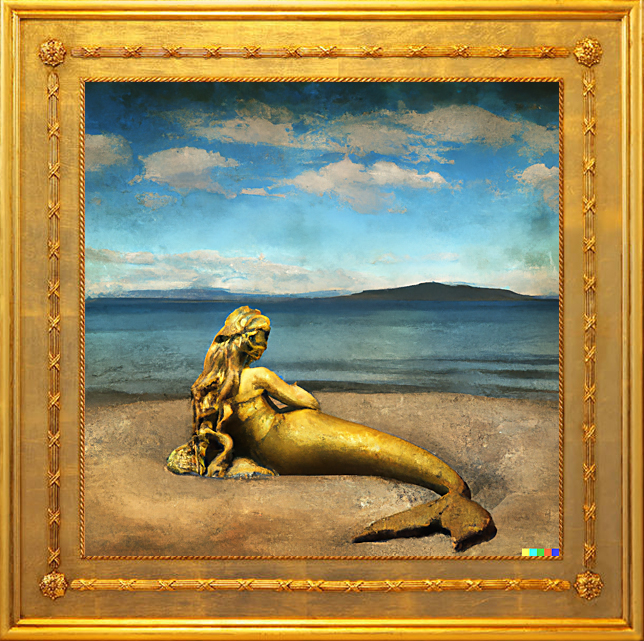
I’ll never understand why showing a woman’s breasts in art is frowned upon, even in this century! Will the world ever grow up and evolve past this?! More than once DALLE-2 has flagged my prompts as “possibly” going against its sex and gore image policy. I enjoy working with DALLE-2 and I’m afraid that I might be banned for using words that are flagged. For example, I was merely naming types of Thai freshwater fish and the word “Snake-head” fish (which are delicious, btw) when I was given a warning. This brings to mind the disturbing issue of being falsely accused by an AI system purely out of its own ignorance and the ramifications for a future life with judgemental machinery left in charge.
I started with the basic description of, “Raphael-style painting of an aged golden mermaid statue on the beach with a blue sky, the sea, and two small islands in the background.” 20 seconds later I was given the image above. As soon as I saw this prudish painting, I knew I wasn’t going to be happy with the DALLE-2 version of this image. But wait…
DALLE-2 got the last laugh on this one! I’ve added it to my collection as a commentary on the state of the art and worldly affairs on this date in the 21st century. Here we have a creature who lures ship crews to their death, falsely advertising what she can’t deliver; now feigning modesty and purity when confronted on camera.
Who does that remind you of? 😉
And so ends this collaboration of man and machine until next time...
NFTs? Yeah, We Do That!

About the Authors
Photographer George Edward Giunca and his Thai wife have traveled around Thailand armed with a circular fisheye lens to create a photo essay on the rich cultural diversity, and abundant natural beauty of the Kingdom of Thailand. Fleeing from angry water buffaloes, slapping huge mosquitoes, watching exotic festivals and religious rituals, gorging on delicious spicy food, applying aloe vera cream to sunburned skin, wading through rice paddies, getting drenched to the bone by heavy monsoon rains, and gawking at breath-taking scenery; made it a journey of epic proportions! The result is the book, THAILAND 180º. Later, they traveled extensively through Myanmar, Malaysia, and India, gathering a massive collection of 180º photos. They currently live in Bangkok, Thailand.
Here’s How to Order Your Copy of THAILAND 180º Collectors Edition Today!
In Thailand —>>>http://www.thailand180.com/thaiorder.html
The Rest of the world: We are offering our book on Amazon.com, below list price http://amzn.to/1knDPRR
Not Familiar with Our Book???
This show details the origin of 180 Books, a series of art/travel books illustrated with a circular fisheye lens. By using infographics, pictures from our THAILAND 180º book, and never seen before images from our vault, we’ll demonstrate this unique lens and present our unique books.


